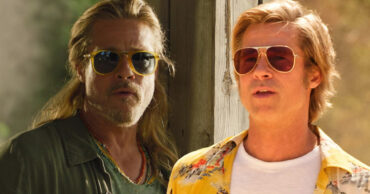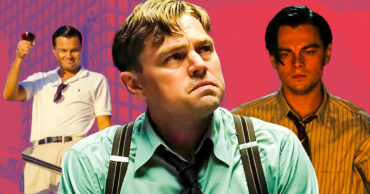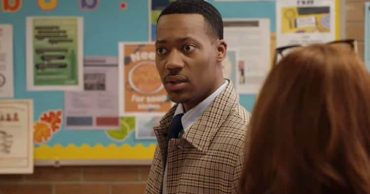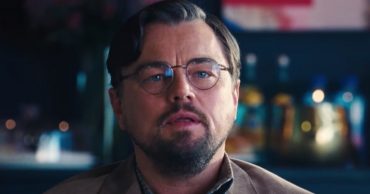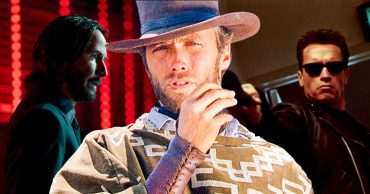
The year 1927 was quite the significant one in the silent film era and was actually the year that marked the end of it. With The Jazz Singer being released to audiences and revealing to them the new development of including dialogs in a film and bringing to their years the first dialog that was ever spoken in it, “Wait a minute, wait a minute. You ain’t heard nothing yet”, the year was quite an eventful one in cinematic history. Of course, the movie itself was quite the entertainer too, and although it didn’t really match up to the other works on our list of What A Night Out At The Movies In 1927 Would Have in Store For You, it sure came pretty close! You can read more about it in our Special Film section especially included in this article, only to honor a film that brought on the era of the talkies!
The Lodger: A Story of the London Fog
Alfred Hitchcock was one of the pioneering and pathbreaking filmmakers across generations and in 1927, Alfred gave to audiences his third feature film, The Lodger: A Story of the London Fog. With a cast consisting of Marie Ault, Arthur Chesney, June Tripp, Malcolm Keen, and Ivor Novello, among others, the movie explores the dread surrounding the gruesome killings carried out by the serial killer nicknamed The Avenger. Exploring how a case of mistaken identity and the overbearing nature of a possessive policeman runs havoc in the life of the young man who looks and behaves a lot like the killer but isn’t really the one to go after. Almost losing his life to a mob comprised of people who are now convinced that this is indeed the killer who is going around murdering young blondes, the movie thankfully has a happy ending with the hero recovering from his wounds in the arms of his newfound love. Of course, thanks to Alfred Hitchcock’s unique style of filmmaking, the movie takes the audience on a chilling journey nevertheless, with one murder after another even forcing the audience to look at the young innocent lodger with increasing suspicion. The Lodger: A Story of the London Fog was released on Valentine’s Day in London, while the American audiences had to wait until June to catch a glimpse of the film.
Napoleon
An epic historical film from the silent era, Napoleon is a work directed, written, and produced by Abel Gance, and starring Albert Dieudonne, Gina Manes, Antonin Artaud, and Edmond Van Daele. A masterpiece in its own right, the film was quite the departure from other works of the time, with this one exploring the art of fluid motion as against the static shots that were a staple at the time. In addition to this relatively innovative filming technique, the director also indulged in every visual experiment and effect he possibly could, making Napoleon one of the most extravagant visual experiences of the time. If it were indeed 1927 and if you were indeed looking to have a great night out at the movies, you would indeed have a vivid visual experience if you had to choose this movie from the long list of options you would have had.
Underworld
Underworld was a movie released in 1927 that although not as ominous as the title sounded, did have its share of crime, making it one of the best silent crime thrillers of the year. Also released under the name Paying the Penalty, the film was directed by Josef von Sternberg and has Clive Brook, Evelyn Brent, George Bancroft, Larry Semon, and Fred Kohler leading the cast. The story revolves around the newly forged partnership of “Bull” Weed, a mafioso, and his confidante “Rolls Royce” Wensel. It’s all hunky-dory until Rolls Royce falls for his partner’s girlfriend, “Feathers” McCoy, with the girl equally smitten by Rolls Royce. Adding to the growing complications is the increasing encroachment of a rival gangster “Buck” Mulligan into their territory. A critical and commercial success, winning accolades from critics and audiences alike, the success of the movie made movie bosses at Paramount Studios so happy and benevolent that they even bestowed a bonus amount of $10,000 and a gold medal on the director! So if it was Underworld that was your choice way back in 1927, there was no way you could have gone wrong!
Metropolis
This Fritz Lang film took a whopping 17 months to make, cost a whole lot of money (19 million euros in comparison), and was easily one of the most awaited films of the time, especially with critics who had heard so much about this film named Metropolis and its making that they just couldn’t wait to get their eyes on it. Of course, the science fiction drama that was also an iconic product of the German expressionist era did not disappoint. And although not all genres of audiences could relate to the nuances of the film and put it down to the eccentricities of the minds of a few, the movie was a runaway hit with those who did relate to what it was all about. Over time though, the film has come to be recognized as nothing short of a milestone event in cinematic history and was also the first film in history to make it into UNESCO’s Memory of the World Register. Highly influential to this day, Metropolis, despite tanking at the box office, remains one of the most impactful films to be born in the silent era.
The Unknown
Horror films were quite the rage in the 1920s, and despite the lack of dialog, the silent era did manage to scare the audiences quite a bit even with limited resources at hand. The Unknown was one such film that aimed to put fear into the hearts of the audience and offer them a thrilling ride that lasted around 50 minutes, and it sure was successful in its attempt! Labeled as one of the most outstanding films of not just 1927 but the entire silent era, the film has since acquired cult status in certain circles and is considered a masterpiece in most. Directed and co-written by Tod Browning and led by a cast consisting of Lon Chaney, Norman Kerry, Joan Crawford, and Nick De Ruiz, the film revolves around the horrifying choices of a circus performer named Alonzo the Armless, who in an attempt to keep his secret, and later, to win the love and acquaintance of the woman he loves, goes to great lengths that are indeed shocking and disturbing. So if you had an hour or so to kill back in 1927, and had The Unknown playing in a theater nearby, you sure would have signed up for quite the horrifying ride!
Sunrise: A Song of Two Humans
When a movie wins the Academy Awards for Best Unique and Artistic Picture, Best Actress in a Leading Role, and Best Cinematography, in addition to being nominated in the Best Art Direction category too, you know it’s got to be one of the best ones, and that’s exactly what Sunrise: A Song of Two Humans was. Directed by F.W. Murnau and based on the short story “The Excursion to Tilsit” by Hermann Sudermann, the film had a magical soundtrack with powerful sound effects and a mesmerizing musical score, making it quite the treat in the silent era. With as beautiful a story as its picturization and sound effects, the film revolves around the love and lust of a man who has to choose between his wife who is the love of old, and his newfound woman from the city who is the new, and fights several battles to make sure that he does indeed make the right decision. A simple story that has been woven together beautifully to create a masterpiece, Sunrise: A Song of Two Humans is just the movie you need to watch to make the right choices in life!
The Kid Brother
If Harold Lloyd was an icon of the silent era, The Kid Brother was an iconic film of this stalwart’s career, and one look at the film, or even its trailer, will tell you why! Well-known for his stunts as well as comic timing, Harold has indeed got it all right in more ways than one in this particular film, making it one of the most successful ones of his career as well as the silent era. Teaming up with Jobyna Ralston yet again, but sadly their last collaboration, Harold delivers an all-out entertainer here, bringing to audiences the perfect mix of comedy, romance, and drama, even adding to the then newly evolving element of character development. If it was a light-hearted evening you were seeking in 1927, you just couldn’t have gone wrong with The Kid Brother, a story that takes on an adventure with Harold Hickory and Mary Powers!
Wings
Moving on from her role as a leading lady with Harold Lloyd, Jobyna Ralston stunned audiences by taking on a supporting yet impactful role in the silent war film, Wings. Premiering first in 1927 in New York City, and then released in Los Angeles in 1928, and then again across the United States in 1929, the film was one of the most adventurous and extravagant ones of the time, dedicating itself to picturizing some of the most challenging visuals of the time with military aviators amounting to 300 pilots and thousands of extras re-enacting war sequences that were pathbreaking at the time. It was also one of the first mainstream movies to depict nudity in any form, have a man kiss another man, and even had two female actors playing the role of a couple. And for these reasons and others, Wings became a widely talked about film even before it was released. Made on an extravagant budget of $2 million, the movie raked in an impressive $3.6 million back then. It is also one of those rare movies that enjoyed brief re-releases decades after its original launch, and as late as 2012 and 2017 too.
7th Heaven
A heartbreaking and emotional silent romantic drama, 7th Heaven has audiences falling in love and developing a unique connection with Janet Gaynor and Charles Farrell, playing the roles of Diane and Chico respectively. In addition to touching the hearts of audiences, the film also received recognitions and awards on other fronts, notching several Academy Award wins in the categories of Best Director, Best Actress, and Best Writing, as well as nominations in the categories of Outstanding Picture and Best Art Direction. Easily one of the most successful films of the year and an icon of the silent era, 7th Heaven is everything you’d expect from a romantic war drama. With loads of drama and romance, as well as heartbreak and redemption, this film was indeed a great choice for a night out at the movies in 1927.
Special Film: The Jazz Singer
There are films that make an impression and then there are films that make history! And as far as making history goes, The Jazz Singer was pretty much the film that rewrote cinematic history by inviting audiences to step into the era of the talkies, officially marking the beginning of the end of the silent era. Of course, after this movie, many filmmakers jumped on the bandwagon to create talking films themselves, and in addition to giving them even more creative freedom, this new development also gave audiences a lot more to look forward to. Of course, silent films had a charm of their own and even today, we love sitting ourselves down to watch one of the many gems from the era, but introducing the capability to put real words into the mouths of characters did give filmmakers that extra edge to explore their creativity. As a film, The Jazz Singer was quite the enjoyable one too, bringing to audiences a heartwarming story of a young man played by Al Jolson from a Jewish family who defies tradition and heritage to embrace his love for all things music. Of course, this results in several clashes and that is just about the premise that the film is based on. The Jazz Singer did quite well at the box office too, raking in a cool $2.6 million, against the $422,000 it took to make it. After all, everyone wanted to be a part of this revolutionary turn in cinematic history and see their favorite movie characters actually talking! Magical times for the entertainment industry indeed!
That’s What A Night Out At The Movies In 1927 Would Have in Store For You!
Even as the year marked the beginning of the end of the silent era, silent films kept going strong long after The Jazz Singer hit theaters and introduced audiences to a whole new experience, and despite what you may think, the era of the talkies did take a while to find a firm footing in the film industry. Of course, that doesn’t take anything away from the historic year that 1927 turned out to be for films, and as a turning point, this one will always remain etched in the pages of cinematic history. So if you had to plan a night out at the movies in 1927, there sure was a lot in store for you!
 Follow Us
Follow Us
